Publication Date: 10-22-2023
Killers of the Flower Moon (2023) review
Dir. Martin Scorsese
By: Steve Pulaski
Rating: ★★½
Over the next few months, and into the new year, with the Oscars around the corner, Martin Scorsese’s Killers of the Flower Moon will surely be debated, discussed, and dissected, deservedly so. Much will be made of its gargantuan length at just a tick under three-and-a-half-hours. When discussing the film with my girlfriend after seeing it, we never once brought up the length as a negative. I would’ve happily watched another hour. The issues present in Scorsese’s adaptation of David Grann’s novel run deeper than its runtime.
Killers of the Flower Moon opens during an Osage Nation ceremony that has its members somberly accept the fact that they must assimilate into white American society. They’ve been pushed off their properties, and have made their homes the vast planes of Oklahoma. Good fate fell on them soon after, however, as they found the land rife with oil. In seemingly no time, the Osage became the wealthiest group of people in the country per capita.
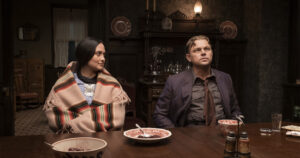
This makes them the target of the whites who stole their land in the first place. In 1918, Ernest Burkhart (Leonardo DiCaprio) returns home from World War I to live with his rancher uncle William King Hale (Robert De Niro). Hale has found a fruitful middle-ground in being a benefactor to the Osage — speaking their language and liberally bestowing gifts to their people — while conspiring to murder them one-by-one in order to obtain their headrights and steal their wealth. Hale, who goes by “King,” believes a lowly simpleton like Ernest would be a perfect liaison for this scheme.
Ernest soon meets Mollie (Lily Gladstone), an Osage whose family owns much of the oil-rich land. The two marry, but before long, Mollie’s sisters and other members of the Osage population are murdered one after another. Their murders are never investigated. Case and point, Mollie’s sister, Anna (Cara Jade Myers), who is married to Ernest’ brother Byron (Scott Shepherd), is shot by a creek and the town seems to accept it as an unfortunate tragedy. Later, Mollie discovers she has diabetes, and although King assures she’s one of merely a few individuals who can get consistent access to insulin, the disease renders her bedridden as chaos and death washes over her family and her people.
In a vein similar to Casino, or even John Singleton’s Rosewood, Scorsese and Eric Roth’s screenplay orbits around this large-scale setting through various other characters. Tantoo Cardinal is Mollie’s ailing mother; a pair of singer-songwriters in Jason Isbell, as Ernest’s trouble-making brother-in-law, and Sturgill Simpson as a bootlegger, turn in solid performances; John Lithgow and Brendan Fraser pop up late as attorneys on opposite sides of the headrights case; and BOI agent Jesse Plemons is dispatched to Oklahoma by President Calvin Coolidge to investigate the murders.
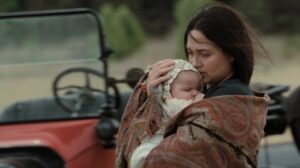
Destined to be underappreciated are Talee Redcorn and Yancey Red Corn as the pair of Osage leaders. At one point, they gather the Nation to discuss the deaths of Mollie’s family members. They lament the losses, talk about the painfully low life expectancy for the Osage, and express deep-seated concern that the world will be unkind to the infantile members of the community. These two command your attention with their cut-and-dry monologues, and the pain on their faces when reciting these words indicates unhealed generational wounds.
Arresting you from the beginning are the Malickian landscapes of Oklahoma, shot with expansive wide-angles thanks to cinematographer Rodrigo Prieto. Visually, the film has a lot in common with Kundun, Scorsese’s underrated drama about the Dalai Lama. The late Robbie Robertson — to whom the film is dedicated — strikes a lovely balance with string-laden musical compositions during some of the quieter moments, and employs traditional Native chants and percussive patterns when tension rises (the absence of the song “Stadium Pow Wow,” which was used to perfection in the film’s trailers, however, is felt).
With Killers of the Flower Moon, Scorsese shoots for a masterpiece, but comes up short with this elegantly shot but dramatically underwhelming adaptation. This is a movie that shows its cards far too early, with De Niro’s King outlining his plan to murder Mollie’s family and other Osage members within the first 30 minutes. As a result, the film drains any and all tension of who will be murdered and who is behind the crimes, rendering these deaths as inevitabilities. Such an approach also makes the Osage people look completely naïve as the body count piles up (which seems hard to believe given their rampant, and warranted, distrust of whites).
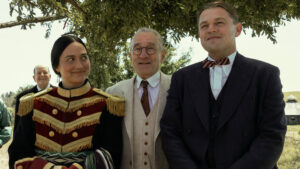
While De Niro turns in an exceptionally sociopathic performances as William King Hale, a man who couldn’t find a reservoir deep enough to wash the blood off his hands, DiCaprio’s Ernest is far less dimensional. While DiCaprio turns in another solid performance, there’s no complexity to Ernest whatsoever. He’s a gullible, loathsome bastard who can’t say no to his powerful uncle.
This wouldn’t be a problem if Roth and Scorsese didn’t make him the antihero of Killers of the Flower Moon. Attempts are made to sympathize with Ernest because his love for Mollie was allegedly authentic. But DiCaprio and Lily Gladstone — whose performance is so good, you’ll be quietly angry that she spends the last hour and change mostly bedridden — aren’t afforded enough opportunities to develop chemistry. Ernest reiterates that he loves Mollie, but his actions hardly show it.
Then we have the ending. Martin Scorsese is now 81-years-old, and his last couple films, most notably, The Irishman, have found him coming to grips with his legacy. It’s a legacy worth celebrating and remembering, as he’s profiled a litany of bad men over the last half century with cinematic and storytelling mastery. The final 15 minutes of Killers of the Flower Moon essentially evokes a record scratch as it shifts into metatextual territory ala Asteroid City. Embedded in the film’s complete and total overhaul in its presentation is a commentary about how history is told by the winners of battles. In an attempt to recognize this fact, however, Scorsese robs the picture of a conclusion fit for the story we just watched unfold for the better part of three hours.
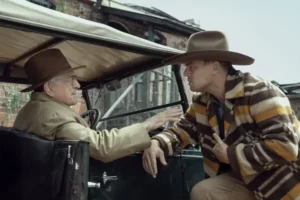
Such a move makes you realize that the better, more appropriate way to tell this story was probably to focus on Mollie’s family as opposed to a bumbling, one-dimensional nephew who both ruined a community and sank his family’s fraudulent wealth in the process.
For a film long enough to warrant an intermission, not to mention in the hands of one of America’s finest filmmakers of this, or any other generation, these shortcomings feel inexcusable. There are swaths of tremendous performances to be found in Killers of the Flower Moon, but this is a project buoyed mostly by its aesthetics, its gentle music, and the depths of William King Hale’s crimes. It’s the first Scorsese film in probably 20 years to underwhelm significantly in key areas.
NOTE: Killers of the Flower Moon is now playing exclusively in theaters.
OTHER REVIEWS OF MARTIN SCORSESE FILMS:
My review of Kundun
My review of The Irishman
Starring: Leonardo DiCaprio, Robert De Niro, Lily Gladstone, Jesse Plemons, Tantoo Cardinal, John Lithgow, Brendan Fraser, Cara Jade Myers, Jason Isbell, Sturgill Simpson, Scott Shepherd, Talee Redcorn, Yancey Red Corn, Pat Healy, and Jack White. Directed by: Martin Scorsese.
About Steve Pulaski
Steve Pulaski has been reviewing movies since 2009 for a barrage of different outlets. He graduated North Central College in 2018 and currently works as an on-air radio personality. He also hosts a weekly movie podcast called "Sleepless with Steve," dedicated to film and the film industry, on his YouTube channel. In addition to writing, he's a die-hard Chicago Bears fan and has two cats, appropriately named Siskel and Ebert!


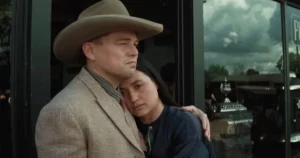
Your website’s great. Do you have the option to subscribe to posts by email?
Hey, Jessica. At this time, I do not, but I sincerely appreciate you reading and checking out some of my work! It means a lot.